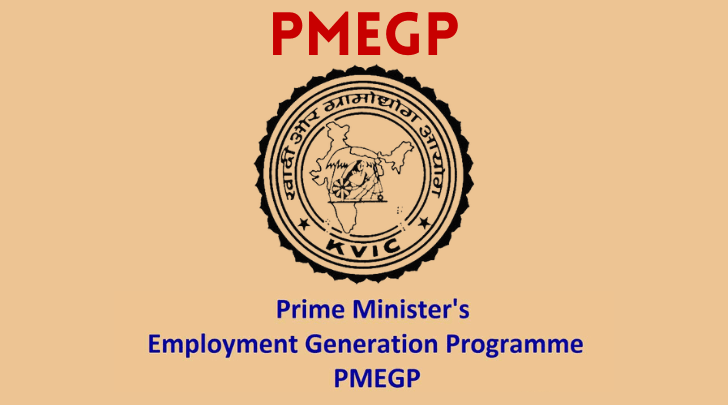
Micro, Small, and Medium Enterprises (MSMEs) are the backbone of many economies worldwide, contributing significantly to employment, innovation, and GDP. However, access to adequate funding is one of the most significant challenges MSMEs face. This is where MSME loans come into play. In this comprehensive guide, we’ll explore everything you need to know about MSME loans, from their importance and types to eligibility criteria and application processes.
Understanding MSME loans
What is an MSME loan?
An MSME loan is a type of financial assistance provided to micro, small, and medium enterprises. These loans are designed to help businesses meet their working capital requirements, purchase machinery, expand operations, and manage cash flow, among other needs. Financial institutions, including banks and non-banking financial companies (NBFCs), offer these loans with varying terms and conditions.
Importance of MSME Loans
MSME loans are crucial for several reasons:
- Business Growth: These loans provide the necessary capital for expanding operations, purchasing new equipment, or entering new markets.
- Cash Flow Management: MSME loans help manage cash flow, ensuring businesses can meet operational expenses even during downturns.
- Innovation and Competitiveness: Access to funding allows MSMEs to invest in research and development, adopt new technologies, and stay competitive.
- Job Creation: By supporting the growth of MSMEs, these loans contribute to job creation and economic development.
Types of MSME Loans
There are various types of MSME loans available, each catering to different business needs:
1. Term Loans
Term loans are provided for a specific purpose, such as purchasing machinery or expanding facilities. They are usually for a fixed term with regular repayment schedules.
2. Working Capital Loans
Working capital loans are designed to cover the day-to-day operational expenses of a business, such as salaries, rent, and inventory costs. These loans ensure that the business runs smoothly without financial hiccups.
3. Equipment Financing
This type of loan is specifically meant for purchasing new machinery or equipment. The equipment itself often serves as collateral for the loan.
4. Invoice Financing
Invoice financing allows businesses to borrow money to pay off their outstanding invoices. This helps to maintain cash flow while waiting for clients to pay their invoices.
5. Business Credit Cards
Business credit cards offer a revolving line of credit that can be used for various business expenses. They are an excellent option for managing short-term financial needs.
6. Government Schemes
Many governments offer subsidized loan schemes to support MSMEs. Examples include the Pradhan Mantri Mudra Yojana (PMMY) in India and the Small Business Administration (SBA) loans in the United States.
MSME loan eligibility criteria
The eligibility criteria for MSME loans vary depending on the lender and type of loan. However, some common criteria include:
- Business Vintage: Most lenders require the business to have been operational for a specific period of time, typically one to three years.
- Annual Turnover: The business’s annual turnover should fall within the limits specified by the lender.
- Credit Score: A good credit score is crucial for loan approval. It reflects the business’s creditworthiness and repayment capacity.
- Financial Statements: Lenders often require audited financial statements, including balance sheets, profit and loss accounts, and cash flow statements.
- A detailed business plan outlining the use of funds, expected returns, and repayment strategy can significantly improve loan approval chances.
How to Apply for an MSME Loan
Applying for an MSME loan involves several steps. Here’s a step-by-step guide:
1. Assess your needs.
Determine the amount of funding you require and the purpose for which you need it. This will help you choose the right type of loan.
2. Research lenders
Research different lenders, including banks, NBFCs, and online lending platforms. Compare their loan products, interest rates, and terms to find the best fit for your needs.
3. Check eligibility.
Review the eligibility criteria of your chosen lenders to ensure your business qualifies, review your chosen lenders’ eligibility criteria. This can save you time and effort in the application process.
4. Prepare documentation.
Gather all required documents, such as:
- Business registration certificate
- KYC documents (Aadhaar, PAN, etc.)
- Financial statements (audited balance sheets, profit and loss accounts)
- Bank statements
- Business plan
- Tax returns
5. Submit the application
Complete the loan application form provided by the lender and submit it along with the required documents. Some lenders offer online application processes for convenience.
6. Loan Processing and Approval
Once the application is submitted, the lender will review the documents and assess your business’s creditworthiness. This process may involve site visits and meetings with business owners.
7. Loan Disbursement
If approved, the loan amount will be disbursed to your business account. The disbursement time varies among lenders but usually takes a few days to a few weeks.
8. Repayment
Ensure timely repayment of the loan according to the agreed-upon schedule. Late payments can affect your credit score and incur penalties.
Tips for Successfully Securing an MSME Loan
1. Maintain a good credit score.
A good credit score is crucial for loan approval. Pay your bills on time, reduce existing debt, and avoid defaulting on loans to maintain a healthy credit score.
2. Prepare a solid business plan.
A detailed and well-thought-out business plan demonstrates your business’s potential and instills confidence in lenders. Highlight your business’s strengths, market opportunities, and growth strategy.
3. Keep financial records up-to-date.
Accurate and up-to-date financial records are essential for loan approval. Ensure your financial statements reflect your business’s true financial health.
4. Build relationships with lenders.
Establishing good relationships with lenders can improve your chances of loan approval. Maintain transparent communication and regularly update them on your business’s progress.
5. Consider government schemes.
Explore government schemes designed to support MSMEs. These schemes often come with lower interest rates and favorable terms.
Common Challenges in Obtaining MSME Loans
1. Lack of Collateral
Many MSMEs struggle to provide the collateral required by lenders. Exploring unsecured loan options or government programs can help overcome this challenge.
2. Limited credit history
New businesses often lack a substantial credit history, making it difficult to secure loans. Maintaining good relationships with suppliers and using trade credit can help build a credit history.
3. High interest rates
MSMEs may face higher interest rates due to perceived risks. Comparing different lenders and negotiating terms can help find more favorable rates.
4. A complex application process
The application process for MSME loans can be complex and time-consuming. Seeking professional advice from financial consultants or accountants can simplify the process.
Conclusion
MSME loans are a crucial tool for small businesses’ growth and sustainability. They provide the necessary capital to expand operations, manage cash flow, and invest in innovation. Understanding the types of loans available, eligibility criteria, and application processes can significantly enhance your chances of securing the funding you need.
By maintaining a good credit score, preparing a solid business plan, and keeping accurate financial records, you can position your business favorably for loan approval. Additionally, exploring government programs and building relationships with lenders can provide additional support.
In a dynamic and competitive business environment, MSME loans can be the catalyst that propels your business to new heights. With careful planning and informed decision-making, you can leverage these loans to achieve your business goals and contribute to economic growth.


